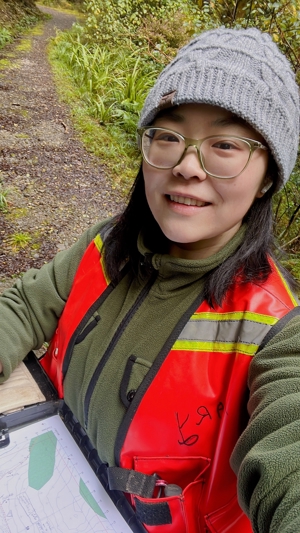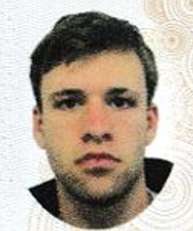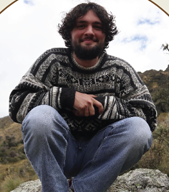Introducing our New Zealand Education Endowment Trust 2025 Scholarship recipients
Every year the New Zealand Branch of the AusIMM Education Endowment Trust (EET) Board of Trustees award EET Scholarships to suitable applicants.
The application process starts the with advertising the scholarships and students from all over New Zealand who are studying a minerals-related degree are encouraged to apply.
The core theme of the NZ Branch AusIMM EET is to identify future industry leaders among AusIMM’s student members and ensure they are offered meaningful opportunities to develop professionally over the course of their scholarship.
Meet our New Zealand 2025 recipients below:
|
Li (Mary) Sike
|
Li is a student at the University of Otago and is undertaking her research project on Anomalous gold along the faulted Reefton Group - Greenland Group contact, Crushington area, Reefton, NZ.
The Reefton Goldfield was one of South Island’s most historically productive orogenic gold deposits. Gold-bearing quartz veins are hosted in various regional-scale, structurally controlled faults and shear zones that crosscut the Ordovician Greenland Group meta-turbidites. The overlying Devonian Reefton Group is generally considered barren of gold, apart from some localised detrital gold within basal quartzites. This study aims to characterise the nature and origins of gold-arsenic mineralisation detected in recent soil surveys along the faulted contacts between the Reefton Group and Greenland Group in the Crushington historic mining area. Anomalous gold zones along the contacts at the Stony Creek, Murray Creek and Lankey Creek areas will be compared and contrasted. The zones are to be mapped and characterised for the style of mineralisation along the fault by using pXRF, a petrographic microscope, and SEM analyses. This will support the determination of which group(s) hosted Au-As mineralisation and establish the structural controls and age of hydrothermal mineralisation relative to the fault contacts. |
|
Adam Jarvis
|
As a third-year student Adam is pursuing a Bachelor of Science degree with a major in Geology at Otago University. Adam’s research project is on Mapping Heavy Minerals in Beaches South of Dunedin.
This project investigates the heavy mineral content of beach sands south of Dunedin to allow for a clear map to be made of heavy minerals present in the region while linking them back to their original source. By collecting and analyzing sediment samples from the selected coastal locations, the study aims to determine the concentration and composition of heavy minerals such as magnetite, ilmenite and zircon. The research involves field sampling, and mineral identification using both cross polarized microscopy and electron microscopy. The findings will help to provide insight into the geological processes that influence heavy minerals distribution, with a lot of emphasis on the effects that river systems have on transporting minerals from inland to the coastal area. By comparing the results with known heavy mineral deposits, this study contributes to a broader understating of coastal minerals resources in New Zealand. The research being done is highly relevant to the minerals industry. With heavy minerals sand mining being prominent of the west coast of New Zealand the research being done here can help with understanding if similar actions can be taken in regions around the Dunedin area. This project could become preliminary research for large projects looking into mineral extraction on the East coast of the South Island. |
|
Christine Burchell
|
Having recently completed her Bachelor of Science majoring in Earth Science at the University of Waikato. Christine’s is studying for a Master of Science with a focus in Earth Science, her project is on Holocene Fluvial Deposition History of the Horotiu Area, North Island New Zealand: Implications for Placer Deposits. The research aims to reconstruct the Holocene geological history of the Horotiu area in the Waikato region on New Zealand’s North Island. Specifically, I will study the confluence of the Waipa and Waikato Rivers, two significant river systems of the Waikato region. I hypothesise that the area south of the current confluence was once a location of complex interactions between the rivers in the form of channel migration and abandonment, which influenced the stratigraphy and accumulation of heavy minerals and heavy metals. I suspect the area was also influenced by volcanic activity, which may have helped shape the local landscape, particularly at higher elevations. One focus of this project is to understand the distribution of heavy metals in river deposits and how these differ through time/stratigraphy and compared to adjacent floodplain sediments. I aim to determine how past sedimentary conditions affected heavy mineral distributions and heavy metal concentrations in these fluvial deposits. Additionally, if volcanic material is indeed present in the shallow subsurface, did it introduce metal-rich sediments or influence the geochemistry of these deposits? These questions are particularly relevant to the minerals sector because they are applicable to the exploration of placer deposits. Moreover, the insights gained from my study may also have implications for mine-waste disposal in the region. At the end of this research, I aim to have a better understanding of these aspects in the context of a nice local geological story. This scholarship is a great opportunity to, therefore, help me reconstruct the Holocene geological history of the Horotiu area of the Waikato region of New Zealand. |
|
Archie O’Sullivan
|
Archie’s project is on the Baker Farm Mineral Exploration Project at Blackmount, Southland, NZ. The goal of this project is to identify alluvial gold, platinum, or other heavy mineral deposits on a relic point bar from the Waiau River. To do this, a magnetic survey is being conducted with GEM’s GSM-19 Magnetometer to identify channels containing higher heavy magnetic mineral concentrations along the whole point bar spanning ~21 hectares. Previous core samples from the 1990’s indicate river gravels descend on the bar to a depth of at least 14 meters with evidence of alluvial gold at differing depths, indicating the presence of multiple heavy mineral-rich paleochannels stacked on top of one other. GPR will later be used to create an accurate cross-section of an area with a high potential of minerals deposited to clarify the form of these deposits. This project is significant to the area as little recent prospecting has been done on the Waiau river using geophysical equipment, even though the river has historically been known to contain alluvial gold and minor platinum. If results indicate high mineral quantities, this project could have significant implications to the surrounding region in the mineral exploration sector, as findings could interest prospectors to explore an untapped region. |
|
Kate Wignell
|
Kate is currently in her third and final year at the University of Otago and is managing her own individual research project to further develop her skills in field investigation, data collection, analysis and reporting. The project is on Heavy Minerals From Taieri River Mouth, Dunedin. |




